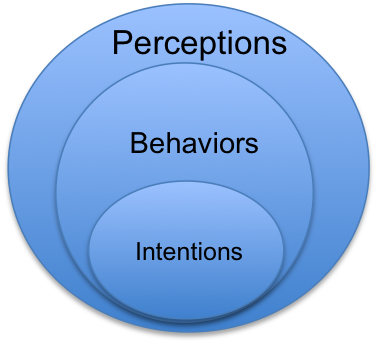“It is good to see ourselves as others see us. Try as we may, we are never
able to know ourselves fully as we are, especially the evil side of us.
This we can do only if we are not angry with our critics but will take in good heart whatever they might have to say.”
― Mahatma Gandhi
The essence of Gandhi’s quote above is about understanding the wake you leave behind as you interact with others – whether it’s people you lead or people you work with. It’s ultimately about self-awareness. And, closing the gap between how you see yourself and how others perceive you is a critical step in being an effective leader and team member. In fact, research shows that emotional intelligence, of which self awareness is a component, is so important for job performance that 83% of people high in self-awareness are top performers, and just 2% of bottom performers are high in self-awareness.*
So, how do you close the gap between how you see yourself and how others see you? One way is to examine the Intentions → Behaviors → Perceptions model.
- Intentions define your agenda, intent, and what you hope to achieve or gain from any given situation. Your intentions are often unspoken.
- Behaviors are the outward manifestation of what people see – your body language, words, tonality, and what you do.
- Perceptions are ultimately the conclusions that people come to based on your behaviors.
Your intent may not always be in alignment with what others perceive, and that’s where leaders get in trouble. Take Sarah as an example. She’s a hard driving leader in one of our executive coaching and leadership development programs. She’s motivated by change; she always “steps up” to tackle a challenge; and she prefers to control her environment.
Sarah just received feedback that she is arrogant. That she’s above it all and has all of the answers. But when you speak with Sarah in private, she doesn’t begin the day with the intent of marginalizing others or dominating conversations. She just wants results and wants them quickly.
The Intentions → Behaviors → Perceptions model can help. The challenge is to take a step back, reflect inward, and then align your behaviors so that others perceive your real intent.
*EI 2.0, Bradberry, Greaves

